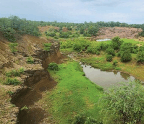KNP HISTORY: History of Camps

‹‹ Joep Stevens is a keen historian who was introduced to the Kruger National Park by his parents in 1966. This ignited his interest in and passion for the Park.

In Issue 7 of KRUGER MAGAZINE, we featured Satara camp, jewel of the central plains. In our winter edition, we take a look at the capital of the Kruger, namely Skukuza Camp. Due to its rich history and size, we have decided to provide the history in two parts, the first being the beginning era from establishment until 1953.


1. Origin of the name
“Skukuza most certainly owes its existence to the Selati railway line connecting Komatipoort with Soekmekaar and that crosses the Sabie River.”



The name ‘Skukuza’ was given to the well-known first warden, Colonel James Stevenson-Hamilton, by the local inhabitants and staff. ‘Skukuza’ is a corruption of the original isiZulu ‘sikhukhuza’ meaning ‘he who sweeps or scrapes clean or level’, referring to the bitterness of local inhabitants being deprived of their dwelling place and having to be resettled outside the borders as the national park was established. Skukuza was initially known as Sabi Bridge and Reserve before being renamed Skukuza in September 1932.
2. Skukuza as a railway crossing
You’re reading a preview, subscribe to read more.
Start your free 30 days



